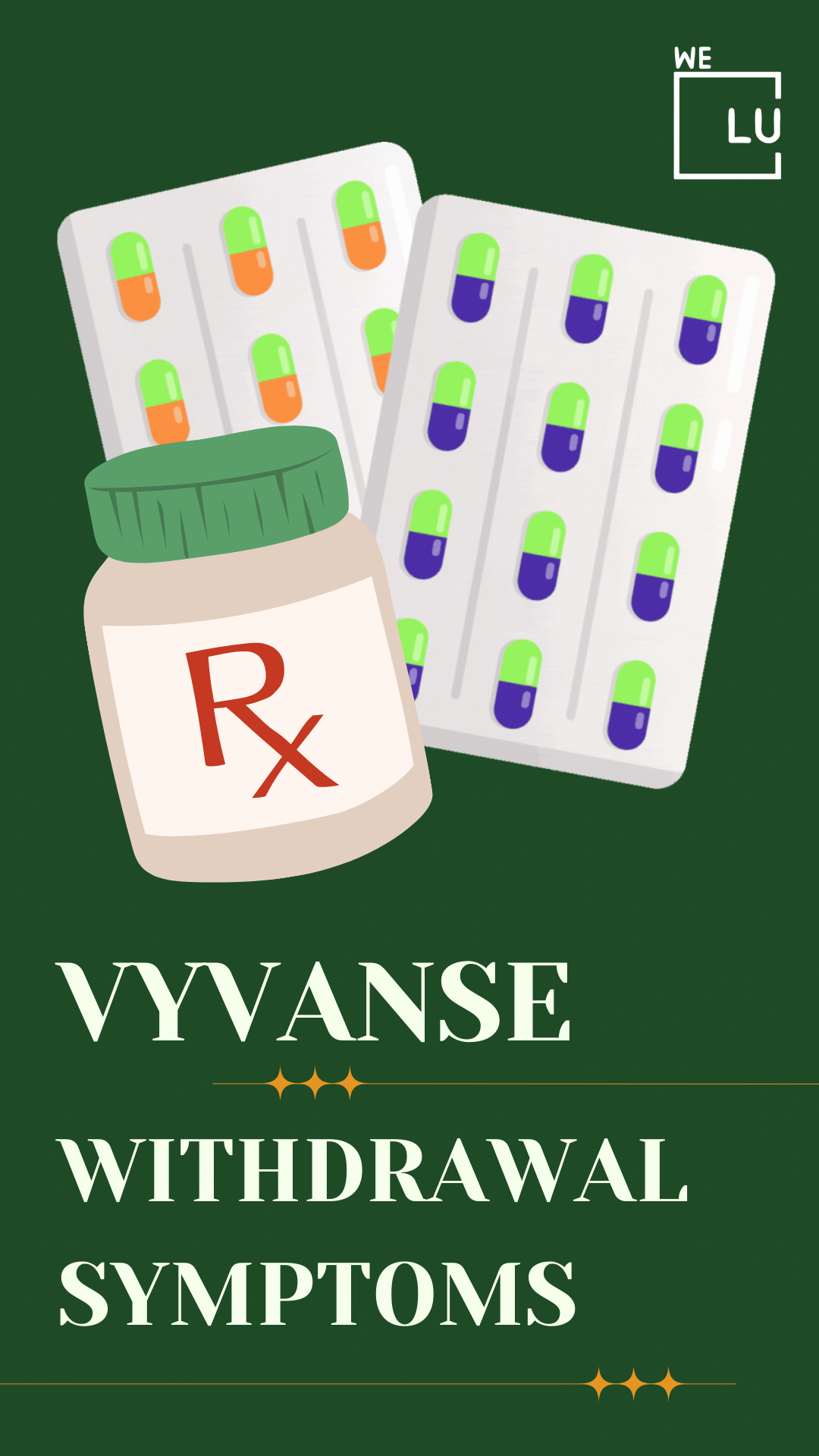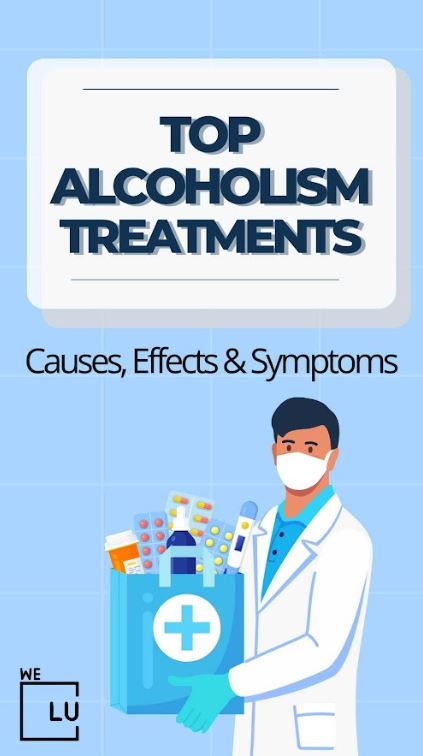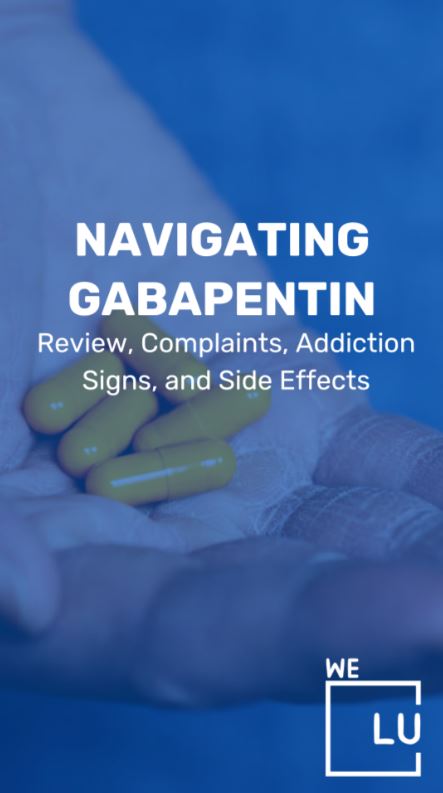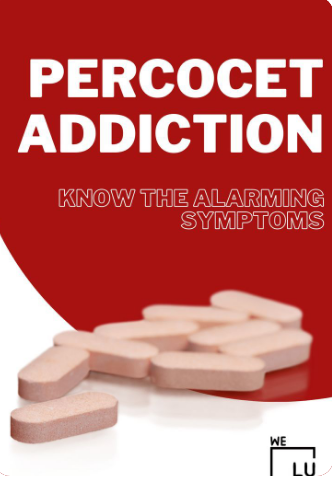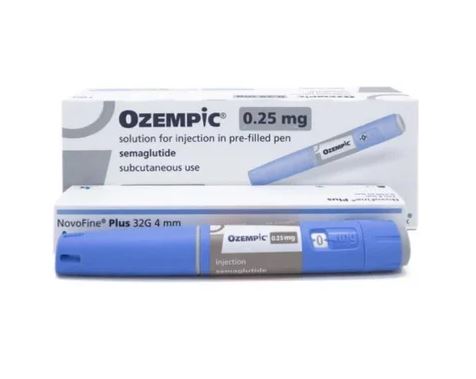Pseudoephedrine Side Effects Overview
Pseudoephedrine is a medication used as a decongestant to alleviate nasal congestion resulting from colds, allergies, and other respiratory conditions. Pseudoephedrine is generally safe when used as directed. However, it can be hazardous if misused or overused. Moreover, pseudoephedrine has been regulated and scrutinized due to its potential misuse and abuse in producing methamphetamine, a highly addictive and illegal drug. Methamphetamine can be made using pseudoephedrine extracted from over-the-counter cold and allergy medications.
As a result, many countries and states have formulated restrictions on the sale and distribution of pseudoephedrine. In the United States, for example, the Combat Methamphetamine Epidemic Act of 2005 directed retailers to keep pseudoephedrine products behind the counter and limit the amount a customer can purchase in a single transaction. Some states have also introduced additional restrictions on the sale of pseudoephedrine.
Pseudoephedrine Guide
Pseudoephedrine Uses
Pseudoephedrine serves as a remedy for temporary relief from nasal congestion and sinus discomfort arising from infections like the common cold influenza or respiratory conditions like hay fever, allergies, and bronchitis. Pseudoephedrine functions as a decongestant by constricting blood vessels, thereby reducing swelling and congestion.
If you intend to self-administer this medication, it is crucial to meticulously review the manufacturer’s package instructions to ascertain when you should seek guidance from your healthcare provider or pharmacist (please refer to the Precautions section for additional information).
It’s important to note that cough-and-cold products have not been proven safe or effective for children under 6 years old. Likewise, using long-acting tablets or capsules in children under 12 is not advisable. Refrain from using this pseudoephedrine product in children under 12 unless expressly instructed by a medical professional. To acquire more comprehensive guidance on using the product safely, consult your doctor or pharmacist.
These products do not offer a cure for or reduction in the duration of a common cold and may carry the risk of causing severe side effects. To minimize the likelihood of serious side effects, diligently adhere to all recommended dosage instructions. Do not employ this product to induce drowsiness in a child, and avoid providing other cough-and-cold medications that might contain identical or similar ingredients (for additional information, consult the Drug Interactions section). Consult your doctor or pharmacist to explore alternative methods for alleviating cough and cold symptoms, such as maintaining proper hydration, utilizing a humidifier, or employing saline nose drops or spray.
How To Use Pseudoephedrine Oral
When using an over-the-counter product for self-treatment, it’s essential to thoroughly review all the instructions provided on the product’s packaging before consuming this medication. If you have any uncertainties, seek advice from your healthcare provider or pharmacist. If your doctor has prescribed this medication, adhere to their instructions.
Administer this medication orally, either with or without food, typically every 12 or 24 hours, depending on the specific product, or following the guidance from your doctor or the product’s packaging. Ensure that your daily intake does not surpass 240 milligrams. The dosage depends on factors like age, medical condition, and your body’s response to the treatment. Do not exceed the recommended dose; refrain from taking this medication more frequently than directed. Abide by the suggested dosage that is appropriate for your age.
Remember to shake the bottle thoroughly before each dose if you are utilizing the liquid suspension. Employ a specialized medication-measuring device or spoon to measure the prescribed dose accurately. Avoid using a regular household spoon, as it may not provide the precise measurement required.
Take the capsules or tablets with a complete glass of water, swallowing them whole. Do not crush or chew these capsules or tablets, as doing so can rapidly release the entire dose, heightening the risk of experiencing side effects.
A wide array of brands and formulations of pseudoephedrine exists in the market. It’s crucial to meticulously review the dosage instructions for each specific product since the quantity of pseudoephedrine can vary among these products. It is imperative not to exceed the recommended pseudoephedrine dosage.
Take note that caffeine has the potential to amplify the side effects of this medication. It is advisable to refrain from consuming substantial quantities of caffeine-containing beverages such as coffee, tea, or colas and large amounts of chocolate. Additionally, avoid using nonprescription products that contain caffeine.
If, even after 7 days, your symptoms do not ameliorate, or if they deteriorate or reoccur, or if you experience a persistent headache, fever, rash, or suspect a severe medical issue, seek immediate medical attention.
Pseudoephedrine Side Effects
You might experience nausea, vomiting, difficulty sleeping, dizziness, headaches, or nervousness as potential side effects. If these effects persist or worsen, promptly inform your doctor or pharmacist. Cease using this medication and notify your doctor immediately if you encounter dizziness, nervousness, or sleep disturbances.
You may notice an empty tablet shell in your stool when using specific products. This occurrence is benign since your body has already absorbed the medication.
It’s essential to remember that if your doctor has prescribed this medication, they have carefully weighed the benefits against the potential side effects and determined that the advantages outweigh the risks. Many individuals who use this medication do not encounter severe side effects.
Discontinue this medication and promptly inform your doctor if you experience any severe side effects, including persistent stomach or abdominal pain, rapid, irregular, or pounding heartbeat, alterations in mental state (like anxiety, confusion, restlessness), tremors, or difficulties with urination.
Although extremely rare, a severe allergic reaction to this drug can occur. Seek immediate medical assistance if you notice any symptoms indicative of a severe allergic reaction, such as a rash, itching, swelling (especially in the face, tongue, or throat), severe dizziness, or breathing difficulties.
Pseudoephedrine Risks
Before commencing pseudoephedrine treatment, you must communicate with your doctor or pharmacist regarding any allergies, including allergies to pseudoephedrine or other substances. Additionally, inform your healthcare provider if you have experienced adverse reactions to other sympathomimetic drugs, such as ephedrine or phenylephrine. Some formulations of this product may contain inactive ingredients that have the potential to trigger allergic reactions or other complications. For further information, consult your pharmacist.
Suppose you have any of the following medical conditions. In that case, it is advisable to seek guidance from your doctor or pharmacist before using this product: diabetes, a specific eye condition known as glaucoma, heart-related issues (such as a history of heart attack, chest pain, or heart failure), rapid or irregular heartbeats, high blood pressure, kidney disease, an overactive thyroid (hyperthyroidism), or difficulties with urination (e.g., due to an enlarged prostate).
This medication can induce dizziness, and the consumption of alcohol or marijuana (cannabis) may exacerbate this effect. Until you can safely perform tasks requiring alertness, such as driving or operating machinery, it is recommended to avoid these activities. Additionally, it’s advisable to limit your alcohol intake. If you use marijuana (cannabis), consult your doctor for further guidance.
Liquid formulations of this product may contain ingredients like sugar, alcohol, or aspartame. If you have conditions such as diabetes, alcohol dependency, liver disease, phenylketonuria (PKU), or any other condition necessitating restrictions or avoidance of these substances in your diet, exercise caution. Seek advice from your doctor or pharmacist concerning the safe use of this product.
Individuals with a severe narrowing of the esophagus, stomach, or intestines should refrain from using 240-milligram sustained-release pseudoephedrine products due to the risk of potential blockage.
Before surgery, you must inform your surgeon or dentist about all the substances you are currently using, encompassing prescription medications, over-the-counter drugs, and herbal products.
In the case of older adults, they may exhibit heightened sensitivity to potential side effects of this medication, remarkably rapid or irregular heartbeats, dizziness, challenges with urination, difficulties in sleeping, or confusion.
Conversely, children may manifest increased sensitivity to the side effects of this medication, particularly in terms of heightened restlessness.
Regarding pregnancy, it is advisable to utilize this medication only when it is unequivocally essential. Engage in a conversation with your doctor to comprehensively assess the potential risks and advantages.
Pseudoephedrine can enter breast milk. Before embarking on breastfeeding, it is prudent to deliberate on the associated risks and benefits with your healthcare provider.
Pseudoephedrine Interactions
Interactions between drugs can alter how your medications function or potentially increase the risk of experiencing severe side effects. It is important to note that this document does not encompass all conceivable drug interactions. Maintain a record of all the products you are using, encompassing both prescription and non-prescription medications and herbal supplements, and share this list with your doctor and pharmacist. Do not initiate, discontinue, or modify the dosage of any medications without obtaining your doctor’s consent.
Certain products that could interact with this medication include stimulants (like caffeine, dextroamphetamine, and methamphetamine), herbal supplements like ephedra or ma huang, and terbutaline.
Concomitant use of MAO inhibitors with this medication may lead to a critical (potentially fatal) drug interaction. Avoid using MAO inhibitors (such as isocarboxazid, linezolid, metaxalone, methylene blue, moclobemide, phenelzine, procarbazine, rasagiline, safinamide, selegiline, tranylcypromine) while undergoing treatment with this medication. Furthermore, most MAO inhibitors should not be taken within two weeks before initiating treatment with this medication. Consult your doctor to determine the appropriate timing for initiating or discontinuing this medication.
Notably, pseudoephedrine may diminish the efficacy of blood pressure medications, such as beta-blockers, calcium channel blockers, guanethidine, and methyldopa.
Examine the packaging of all your medications, including items like allergy or cough-and-cold remedies, as they might contain comparable components, such as decongestants like phenylephrine. To ensure safe usage of these products, seek guidance from your pharmacist.
Pseudoephedrine Overdose
Call 911 if someone has overdosed and exhibits significant symptoms like fainting out or difficulty breathing. If not, immediately dial a poison control hotline.
Pseudoephedrine Imprint
Here’s a table providing information about Pseudoephedrine, including its typical dose, condition for use, color, shape, and imprint:
| Pseudoephedrine | Typical Dose | Color | Shape | Imprint |
|---|---|---|---|---|
| Pseudoephedrine 120mg | 120mg | White | Oblong | 204 or L054 |
What is Pseudoephedrine?
Pseudoephedrine relieves nasal congestion caused by allergies, colds, and hay fever. It is also used to relieve sinus congestion and pressure temporarily. Pseudoephedrine will reduce symptoms but will not treat the cause of the symptoms or speed recovery [1]. It is in a class of medications called nasal decongestants.
Thus, it works by causing the narrowing of the blood vessels in the nasal passages. It is found in many over-the-counter medications, such as Sudafed, Allegra-D, Sinutab, and Claritin-D. Pseudoephedrine is a substance that is naturally found in the plant Ephedra sinica. The substance is chemically related to amphetamine and is often used in the illicit production of the central nervous system stimulant methamphetamine (crystal meth).
According to the US Drug Enforcement Agency (DEA) [2], Pseudoephedrine products that are solid-dosed and starched-based tablets are Schedule V if they can also be purchased over the counter (OTC) by a customer without a prescription. If no prescription is required and a customer can buy it and sign the log, it is Schedule 5. These products can only be prescribed with a BNDD (Bureau of Narcotics and Dangerous Drugs) and DEA numbers.
Pseudoephedrine has also been used to enhance athletic performance and may be banned by many professional associations. In addition, because it has been recognized as an ingredient used in the illegal production of methcathinone (a chemical often used in the production of bath salts) and methamphetamine, this drug is subject to monitoring by the United States Drug Enforcement Administration (DEA). Despite this, it is not listed as a controlled substance.
One of the significant concerns regarding the abuse of pseudoephedrine is the ease of manufacturing it into more powerful stimulants such as methamphetamine. In addition, federal law limits the amount of pseudoephedrine anyone can buy at once. It also requires that purchasers produce a photo ID and that retailers keep records of this drug’s sales for at least two years. Regardless, individuals who previously abused this drug may be more likely to experiment with other medications to find a similar high instead of giving up the substance abuse altogether.
How Long Does Pseudoephedrine Stay in Your System?
Pseudoephedrine is not typically included in standard drug tests, but it may be detected in specialized tests designed to detect specific drugs or drug classes.
How long does pseudoephedrine stay in your system drug test? The time that pseudoephedrine stays in your system can vary based on various factors, including age, weight, metabolism, and other factors. Generally, the half-life of pseudoephedrine is approximately 4 to 6 hours, meaning that it takes this quantity of time for half of the medicine to be eliminated from your body.
Pseudoephedrine can typically be detected in urine drug tests up to 24-48 hours after ingestion. However, it may be detectable longer in chronic or heavy users, particularly those who take large doses or have impaired liver or kidney function.
How Long Does It Take Pseudoephedrine To Work?
Pseudoephedrine is considered safe and effective for battling nasal congestion when used as intended. It can reduce symptoms associated with mucus buildup and swollen nasal passages, such as difficulty breathing and pain. The medication works by shrinking the swollen tissue of the nasal passageway and allowing mucus buildup to drain out.
How long does pseudoephedrine last? Pseudoephedrine comes as a regular pill/tablet, a 12-hr. extended-release (long-acting) tablet, a 24-hr. extended-release pill, and a solution (liquid) to be orally taken. The regular pills and liquid are generally taken every 4 to 6 hours. The 12-hr. extended-release pills are usually taken every 12 hours; you should take at least two doses in 24 hours. Extended-release tablets are generally taken once a day, and you should take at most one amount in 24 hours.
Is Pseudoephedrine Addictive?
Pseudoephedrine can be misused as an ingredient for the illicit manufacture of methamphetamines. However, it does carry some risks of abuse on its own. Although many people only use it for medicinal purposes, some have misused and abused pseudoephedrine. Many individuals intentionally take an excessive amount of these drugs to achieve a high, similar to other stimulants like meth or cocaine.
It will cause a sudden rush of energy, excitability, and hyperactivity in large doses. On the downside, pseudoephedrine addiction can cause a fast heartbeat and high blood pressure, leading to cardiovascular issues. The effects of pseudoephedrine side effects and abuse can be very harsh, so individuals must undergo a prescription drug rehab program to get medical assistance during withdrawal.
Pseudoephedrine is not a very addictive substance. However, when the medication is misused, addiction becomes a concern. Those who use this medication only for its intended indication at the labeled dosage should not worry about developing an addiction. As with most other addictive substances, pseudoephedrine targets the brain’s reward system by overloading it with dopamine.
The overstimulation of this system, which rewards our natural behaviors, produces the euphoric effects people desire and encourages them to repeat the behavior. When people get enough of the drug, they can use it to experience its stimulant-like effects.
Abusers of pseudoephedrine report that they experience:
- Increased feelings of energy and alertness.
- Extreme euphoria and well-being.
- A pleasant tingling sensation over their bodies.
These pseudoephedrine side effects do not happen at the recommended therapeutic levels of the drug. Still, they can only occur when someone uses significant amounts of the drug, snorts it, or combines it in liquid and inject it.
Pseudoephedrine Overdose
Individuals who intentionally consume more than the recommended amount of pseudoephedrine may be at risk for overdose.
Severe damaging reactions and overdoses include:
- Dilated pupils.
- Hallucinations.
- Hypertension.
- Heart arrhythmias.
- Seizures.
- Skin reactions.
Individuals with cardiovascular disease, diabetes, uncontrolled hypertension, hyperthyroidism, or who are pregnant should not use medications with pseudoephedrine.
Link Between Pseudoephedrine Meth
Methamphetamine or crystal meth is a glass-like substance that is smoked but may also be injected or snorted. It is a stimulant drug that increases energy, lifts mood and makes users more alert. It is highly addictive and can lead to withdrawal symptoms such as cravings, depression, and nervousness. For those curious about how meth is made, this process is prohibited and is typically performed within criminal organizations. The distribution of methamphetamine is also unlawful. Meth is a highly addictive and harmful drug.
According to the National Institute on Drug Abuse (NIDA) [3], meth can be easily made in small clandestine laboratories with relatively inexpensive over-the-counter (OTC) ingredients such as pseudoephedrine, a common ingredient in cold medications. There are a few unique ingredients required and a few technical skills needed. Once the manufacturing process is complete, people have a cheap and powerful drug. However, the chemicals used for meth production are dangerous and toxic and can harm individuals near the production area and the environment.
Illegally produced pseudoephedrine to meth is typically made by mixing ephedrine with other chemicals that are usually poisonous or highly flammable. The mixture is then combined with a gasoline solvent and heated to crystallize. Because illegal crystal meth production is not supervised or regulated, and there’s no quality control for the pseudoephedrine in meth, many harmful cutting agents could be added to dilute the drug.
It has become much more difficult to buy enough pseudoephedrine to make meth. The Combat Methamphetamine Epidemic Act of 2005 banned over-the-counter (OTC) medicines that contain ephedrine or pseudoephedrine and limited sales to behind-the-counter. Furthermore, it limited the amount of pseudoephedrine a person could purchase each month. Retailers like drug stores must check buyers’ identification and keep personal information about them for two years.
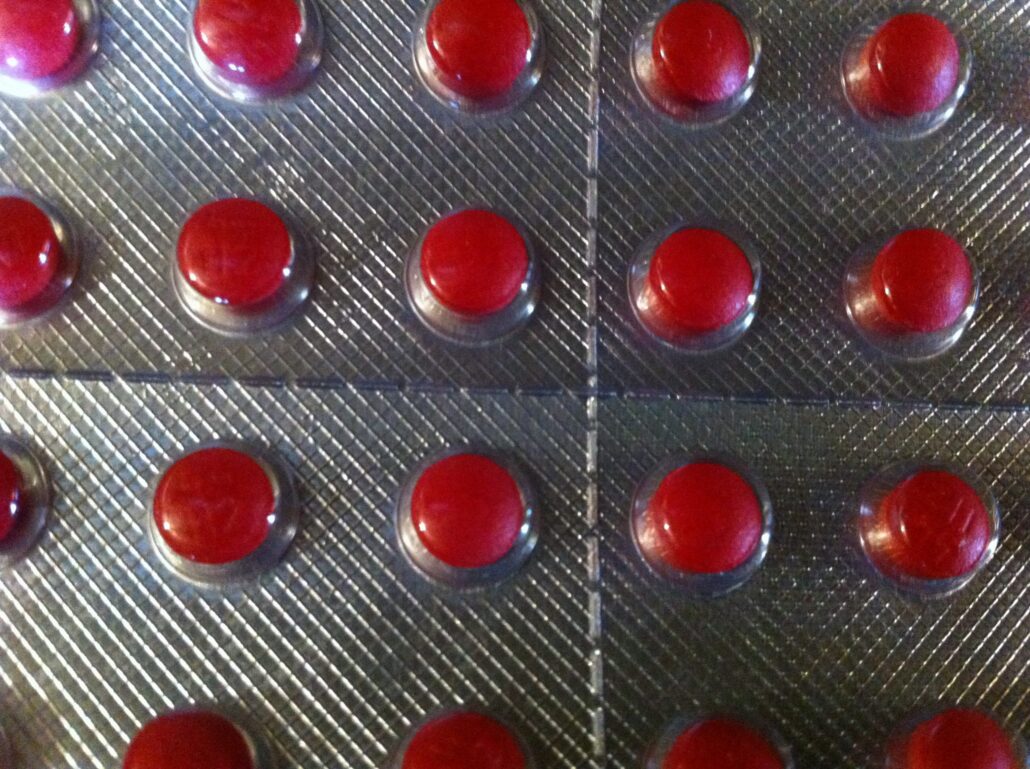
Skip To:
Learn More:
- Mixing Prescription Drugs with Alcohol
- Prescription Pill Detox & Medications
- Prescription Drug Addiction, Types, Symptoms, & Causes
- How To Pass a Drug Test for Meth? How Do Meth Drug Tests Detect Meth?
- What Are The Signs of Meth Use? Meth Abuse Symptoms, Effects, & Addiction Treatment
- How To Get Meth Out Of Your System? The Safest Way To Get Meth Out Of Your System
- What Are The Crystal Meth Side Effects? Short Term and Long Term Effects of Crystal Meth Addiction.
- Symptoms of Someone on Crystal Meth
- Risks and Side Effects of Injecting Meth
- Meth Detox Withdrawal Symptoms, Timeline, & Effective Treatment Options
Pseudoephedrine Medicine Facts
Pseudoephedrine Brand Name: Elixsure Decongestant, Sudafed Pseudoephedrine, Chlor Trimeton Nasal Decongestant, Drixoral Decongestant Non-Drowsy Contac Cold, Nasofed, Entex, Genaphed, Kid Kare Drops, Sudafed 24-Hour, Seudotabs, Silfedrine, Pseudoephedrine Sudafed 12-Hour, Sudodrin, SudoGest, SudoGest 12 Hour, Unifed, Suphedrin, Triaminic Softchews Allergy Congestion.
- Pseudoephedrine Pronunciation: SOO-doe-ee-FED-rin
- Pseudoephedrine Drug Classification: Nasal Decongestants
- Pseudoephedrine Drug Schedule: Schedule V
What Does Pseudoephedrine Do?
Pseudoephedrine decongestant is commonly used to alleviate nasal congestion from allergies or the common cold. It compresses blood vessels in the nasal passages, reducing swelling and inflammation and allowing for easier breathing.
Pseudoephedrine is also used to relieve sinus pressure, ear congestion, and other symptoms associated with allergies or respiratory infections. It is available over the counter in many countries, although it is regulated in some places due to its potential use in the production of methamphetamine.
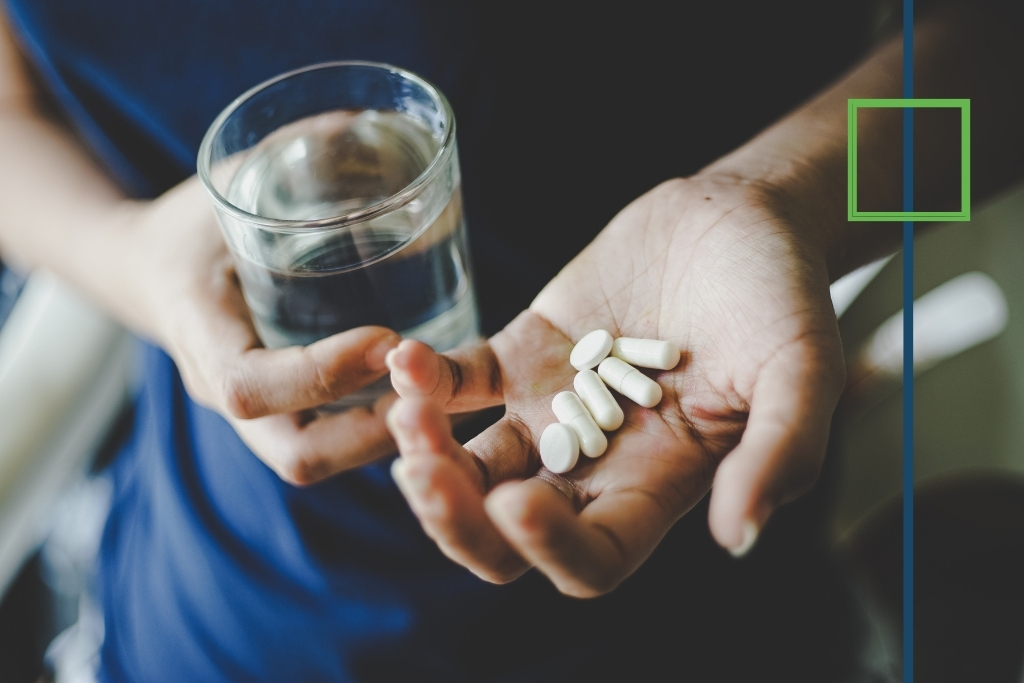
What is in Pseudoephedrine?
Pseudoephedrine is a medication that belongs to the class of drugs called sympathomimetic amines. It is derived from ephedrine, which is a naturally occurring alkaloid found in the plant Ephedra sinica.
Pseudoephedrine Mechanism of Action
How does pseudoephedrine work? The mechanism of action of pseudoephedrine and its ability to stimulate the sympathetic nervous system acts as a direct and indirect agonist of adrenergic receptors located on blood vessels in the nasal passages. When pseudoephedrine binds to these receptors, it causes the blood vessels to compress, lessening inflammation and congestion in the nasal passages. This allows for easier breathing and relief of symptoms associated with colds, allergies, and other respiratory conditions.
Pseudoephedrine Drug Test
Will pseudoephedrine show up on a drug test? Pseudoephedrine can potentially cause a positive result on a drug test, although it depends on the type of test being used and the detection threshold for the drug. Pseudoephedrine is chemically similar to other compounds commonly used as illicit drugs, such as amphetamines and methamphetamine. As a result, some drug tests may cross-react with pseudoephedrine and produce a false positive result.
Pseudoephedrine Warnings
Pseudoephedrine is generally safe when taken as directed, but several essential warnings and precautions should be considered before using this medication:
- Pseudoephedrine side effects can increase blood pressure and heart rate and may cause arrhythmias in individuals with preexisting cardiovascular conditions.
- Pseudoephedrine side effects can interact with certain medications, including antidepressants, beta-blockers, and blood thinners. It is crucial to tell your healthcare provider about all medicines you are taking before using pseudoephedrine.
- Pseudoephedrine HCi should not be used with other decongestants, such as phenylephrine or oxymetazoline, as this can increase the risk of unwanted effects such as high blood pressure and anxiety.
- Pseudoephedrine side effects include nervousness, insomnia, and tremors, especially when taken in high doses or for prolonged periods.
- Pseudoephedrine can be misused or abused for its stimulant effects and is a regulated substance in some countries due to its potential use in the production of methamphetamine.
- Can you take pseudoephedrine while pregnant? Pseudoephedrine when breastfeeding is not advised. It should not be used during breastfeeding or pregnancy, as pseudoephedrine pregnancy safety has not been established.
Pseudoephedrine Breastfeeding
Pseudoephedrine in breastfeeding is not recommended, as it can be released into breast milk and may affect the nursing infant. Pseudoephedrine side effects can decrease milk supply in some women and cause irritability, restlessness, and sleep disturbances in nursing infants.
Suppose you take pseudoephedrine for breastfeeding. In that case, it is recommended to use the lowest sufficient dosage for the shortest possible duration and closely monitor your baby for any signs of breastfeeding pseudoephedrine side effects. If you notice any unwanted symptoms in your baby, such as changes in feeding, sleep patterns, or behavior, you must contact your healthcare provider immediately.
Pseudoephedrine Interactions
Pseudoephedrine can interact with certain medications and may increase the risk of side effects or reduce the effectiveness of other drugs. Some everyday pseudoephedrine drug interactions include the following:
- Antidepressants: Pseudoephedrine can interact with some antidepressants, such as monoamine oxidase inhibitors (MAOIs) and selective serotonin reuptake inhibitors (SSRIs), increasing the risk of serotonin syndrome, a potentially life-threatening condition.
- Beta Blockers: Pseudoephedrine side effects can reduce the effectiveness of beta blockers, commonly used to treat high blood pressure and other cardiovascular diseases.
- Blood Thinners: Pseudoephedrine side effects can interact with blood thinners such as warfarin and may increase the risk of bleeding or bruising.
- Other Decongestants: Pseudoephedrine combined with other decongestants, such as phenylephrine or oxymetazoline, can increase the risk of unwanted effects like high blood pressure and anxiety.
- Other Medications: Pseudoephedrine side effects can interact with many different medications, including asthma medications, thyroid medications, and diuretics.
Ibuprofen and Pseudoephedrine
Pseudoephedrine and ibuprofen can be taken together in most cases. Still, following the recommended dosages and consulting with a doctor if you have any underlying medical conditions or are taking other medications is crucial.
Ibuprofen is a nonsteroidal anti-inflammatory drug (NSAID) generally used to relieve pain, fever, and inflammation. Pseudoephedrine is a decongestant to relieve nasal and sinus congestion associated with allergies or the common cold. Taking “ibuprofen pseudoephedrine” medications can help treat cold or flu symptoms, such as nasal congestion, headache, and fever. However, ibuprofen may reduce the effectiveness of pseudoephedrine in some individuals and increase the risk of unwanted effects such as gastrointestinal bleeding or kidney damage.
Suppose you are taking both Advil cold and sinus pseudoephedrine. In that case, using them at the lowest effective doses for the shortest possible duration is recommended, and avoiding taking them together on an empty stomach, as this can increase the risk of stomach irritation or bleeding.
Pseudoephedrine and Phenylephrine
Phenylephrine vs pseudoephedrine is often searched. These two decongestants treat nasal and sinus congestion caused by allergies or the common cold. While pseudoephedrine vs phenylephrine has similar effects, there are some differences between the two medications.
Pseudoephedrine is a more potent decongestant than phenylephrine and is available in prescription and over-the-counter (OTC) formulations. It compresses blood vessels in the nasal passages, reducing swelling and congestion. However, pseudoephedrine has a higher risk of side effects, such as increased nervousness, blood pressure, and insomnia.
Pseudoephedrine and Alcohol
It is generally not advised to drink alcohol while taking pseudoephedrine as it can heighten the risk of adverse effects such as dizziness, drowsiness, and impaired judgment. Pseudoephedrine is a stimulant that can increase alertness and make it difficult to fall asleep. At the same time, alcohol is a depressant that can make you feel drowsy and impair your ability to think clearly.
Drinking alcohol while taking pseudoephedrine can also increase the risk of other side effects, such as high blood pressure, heart palpitations, and nausea. In some cases, combining alcohol and pseudoephedrine can lead to severe health problems, such as cardiovascular events or liver damage.
Mucinex with Pseudoephedrine
Mucinex is a brand-name medication with the active ingredient guaifenesin, an expectorant that helps to thin and loosen mucus in the nasal airways, making it easier to cough. Some formulations of Mucinex also contain pseudoephedrine, a decongestant that alleviates nasal and sinus congestion. Guaifenesin pseudoephedrine can help treat cold or flu symptoms, such as cough, nasal congestion, and sinus pressure. However, pseudoephedrine can increase blood pressure and heart rate and may cause other pseudoephedrine side effects such as nervousness, dizziness, or insomnia.
Guaifenesin and Pseudoephedrine
Guaifenesin and pseudoephedrine can effectively treat cold or flu symptoms, such as cough, nasal congestion, and sinus pressure, when used together. However, pseudoephedrine can increase blood pressure and heart rate and may cause other side effects such as nervousness, dizziness, or insomnia.
Pseudoephedrine Laws by State 2022
Is pseudoephedrine safe? How much pseudoephedrine can I buy? Each state regulates the sale of each pseudoephedrine, generally limiting it to three bottles or packs each 90 days. Further restrictions apply to the number of capsules and gel packets separately wrapped and counted. This does not mean that over-the-counter medications are prohibited for persons with pseudoephedrine, only that their purchase is restricted.
If you’re searching for a decongestant without pseudoephedrine, consult your doctor for non-addictive alternatives.

Get Your Life Back
Find Hope & Recovery. Get Safe Comfortable Detox, Addiction Rehab & Mental Health Dual Diagnosis High-Quality Care at the We Level Up Treatment Centers Network.
Hotline (877) 378-4154Pseudoephedrine Abuse Statistics
Pseudoephedrine is a medication commonly used to treat nasal congestion. However, it can also manufacture methamphetamine, a highly addictive stimulant drug. Because of this, pseudoephedrine is a controlled substance in many countries, including the United States.
1.7 Million
According to the Substance Abuse and Mental Health Services Administration, in 2019, approximately 1.7 million people in the US reported using methamphetamine in the past year.
Source: SAMHSA
1,648
In 2018, the National Forensic Laboratory Information System reported that pseudoephedrine was found in 1,684 drug seizures in the US.
Source: NFLIS
353 000
The National Survey on Drug Use and Health estimates that 353 000 people in the US ages 12 years or older abuse methamphetamine annually.
Source: NCBI
Pseudoephedrine Dosage
The recommended pseudoephedrine dosage can vary based on the individual’s age, medical condition, and the specific formulation of the medication. Following the dosing instructions on the product label or as directed by a healthcare provider or pharmacist is crucial.
Generally, the maximum daily dose of pseudoephedrine for adults is 240 mg, divided into doses of no more than 60 mg every 4-6 hours as needed for nasal congestion or sinus pressure.
In many countries, pseudoephedrine 60 mg over the counter strength is available. However, the availability and regulations surrounding pseudoephedrine may vary depending on the country and local laws.
As always, reading and following the dosage instructions provided on the packaging or by your healthcare provider is crucial. Too much pseudoephedrine can lead to potentially serious side effects, such as high blood pressure, rapid heart rate, and nervousness.
Even pseudoephedrine hydrochloride 30mg or pseudoephedrine hydrochloride 30 mg dosage is a decongestant medication that can increase blood pressure and heart rate, so it should be used carefully in people with hypertension or cardiovascular disease. Moreover, pseudoephedrine can cause side effects such as dizziness, headache, nervousness, and insomnia.
Always follow the pseudoephedrine HCl 30 mg directions provided by your healthcare provider or on the medication’s label. If you have concerns about taking pseudoephedrine 30 mg dosage or experiencing any unusual symptoms, consult your doctor or pharmacist.
Get Help. Get Better. Get Your Life Back.
Searching for Accredited Drug & Alcohol Rehab Centers Near You? Or Mental Health Support?
Even if you have failed previously, relapsed, or are in a difficult crisis, we stand ready to support you. Our trusted behavioral health specialists will not give up on you. Call us when you feel ready or want someone to speak to about therapy alternatives to change your life. Even if we cannot assist you, we will lead you wherever you can get support. There is no obligation. Call our hotline today.
FREE Addiction Hotline – Call 24/7Brompheniramine/Pseudoephedrine/Dextro HBR Syrup Side Effects
Brompheniramine pseudoephedrine dextromethorphan is a combination medication. Bromphen pseudoephedrine HCl dextromethorphan HBr is commonly used to treat symptoms associated with colds, allergies, and respiratory infections. Brompheniramine is an antihistamine that works by blocking the effects of histamine, a natural substance that causes allergy symptoms such as sneezing, runny nose, and itchy eyes. Pseudoephedrine is a decongestant, reducing swelling and nasal congestion. Dextromethorphan is a cough suppressant that functions by decreasing the activity in the part of the brain that causes coughing.
Brompheniramine-pseudoephedrine-DM can relieve multiple cold and allergy symptoms, such as nasal congestion, runny nose, sneezing, coughing, and itchy, watery eyes. Following the dosing instructions provided by your healthcare provider or on the packaging is crucial, as taking too much of any bromphenir pseudoephedrine ingredient can cause unwanted side effects. Common side effects of brompheniramine-pseudoephedrine-dextromethorphan may include drowsiness, dizziness, dry mouth, nausea, and constipation. Talk to your healthcare provider if you experience any severe or persistent pseudoephedrine bromphen side effects or are concerned about taking this medication.
Brompheniramine/pseudoephedrine/dextromethorphan HBr syrup and brompheniramine pseudoephedrine DM syrup is a combination medication used to treat symptoms of colds, allergies, and respiratory infections. Other common brompheniramine pseudoephedrine dextro HBr syrup side effects can include the following:
- Drowsiness or dizziness.
- Nausea or vomiting.
- Dry mouth or throat.
- Constipation.
- Headache or blurred vision.
- Nervousness or restlessness.
- Difficulty sleeping.
- Rapid or irregular heartbeat.
Less common but more severe brompheniramine / pseudoephedrine / dextromethorphan side effects may include allergic reactions, difficulty urinating or worsening of certain medical conditions such as high blood pressure or heart disease. You must find medical attention as soon as possible if you experience severe or concerning side effects while taking this medication.
Pseudoephedrine Side Effects Long Term
It is generally safe and well-tolerated when taken as directed and for short periods. However, some potential pseudoephedrine side effects long-term are associated with the prolonged use of pseudoephedrine. Also, combining pseudoephedrine with other sympathomimetic drugs and monoamine oxidase inhibitors (MAO) should be avoided. MAOIs were the first class of antidepressants to be developed. Combining MAO inhibitors and this medication can cause an acute hypertensive episode and bradycardia (slower than average heart rate). Examples of MAO are Azilect, Eldepryl, and Marplan. Combination with caffeine in many OTC medications, dietary supplements, and energy drinks may cause hyperglycemia (high blood sugar) and increased body temperature.
Side effects from typical pseudoephedrine misuse and abuse can also include the following:
- Urinary retention.
- Insomnia.
- Nervousness or anxiety.
- Dizziness.
- Excitability.
- Irritability.
- Red eyes.
- Dilated pupils.
- Weight loss.
- Problems sleeping.
- Loss of appetite.
- Tolerance.
- Dependence.
- Addiction.
Let’s face it; medicinal products are not always used as intended. Pseudoephedrine, because of its properties including increased muscle contractility, increased blood flow to skeletal muscles, stimulation of glycogenesis, increased cardiac tropisms, bronchodilatation, activation of the central nervous system, suppression of appetite, is also used as a slimming agent and in sport, as an ergogenic agent, improving efficiency, allowing for faster regeneration and better performance.
The influence of the side effect of pseudoephedrine on sporting performance has long been debated, and observations do not always confirm this effect; however, it is on the list of substances prohibited for use by athletes during competitions. Due to its wide availability, it is considered an anti-doping rule violation when its concentration in urine exceeds 150 μg/mL. This list is a mandatory international standard and is updated annually by the World Anti-Doping Agency (WADA), part of the World Anti-Doping Program [4].
Moreover, according to the National Center for Biotechnology Information (NCBI) [5], pseudoephedrine side effects urination may also be responsible for a false-positive urine test for amphetamine and methamphetamine. The structural similarity to these drugs means they may cross-react in difficulty using the immunological method.
First-class Facilities & Amenities
World-class High-Quality Addiction & Mental Health Rehabilitation Treatment
Rehab Centers TourRenowned Addiction Centers. Serene Private Facilities. Inpatient rehab programs vary.
Addiction Helpline (877) 378-4154Proven recovery success experience, backed by a Team w/ History of:
15+
Years of Unified Experience
100s
5-Star Reviews Across Our Centers
10K
Recovery Success Stories Across Our Network
- Low Patient to Therapist Ratio
- Onsite Medical Detox Center
- Comprehensive Dual-Diagnosis Treatment
- Complimentary Family & Alumni Programs
- Coaching, Recovery & Personal Development Events
Treatment for Pseudoephedrine Addiction
No formal withdrawal management protocol is linked with recovery from the side effects of taking too much pseudoephedrine and pseudoephedrine abuse. However, physicians could give medications specifically designed to treat the pseudoephedrine hydrochloride side effects/pseudoephedrine HCl side effects the person is experiencing, such as depression or lethargy.
Medically-Assisted Detox for Pseudoephedrine Side Effects
A medically-assisted detox program is the first step to a successful recovery for many. There are different stages to detox, and the length depends on specific needs. However, the average detox time is about one week. Medical professionals will be by you throughout your pseudoephedrine abuse withdrawal process to ensure safety and comfort. Under no circumstances that drug detox should be attempted at home. Withdrawal symptoms and duration differ from person to person, but they can be uncomfortable and life-threatening. It mainly depends on the user’s dose and the length of misuse and abuse.
The body withdraws from pseudoephedrine during the acute stage. Medical supervision is necessary and helpful to make sure the body’s reaction to the withdrawal is well managed. Typical withdrawal symptoms include fatigue, nausea, headache, or aches like flu symptoms. Medication-assisted treatment (MAT) can counteract the worst symptoms of acute detox to avoid needless suffering.
Medication-Assisted Treatment for Pseudoephedrine Side Effects (MAT)
Medication-assisted treatment (MAT) combines medications with counseling and behavioral therapies to provide a “whole-patient” approach to treating pseudoephedrine addiction or other substance use disorders. Medications used in MAT are approved by the Food and Drug Administration (FDA), and MAT programs are clinically driven and tailored to meet each client’s needs.
The ultimate goal of MAT is full recovery, including living a self-directed life. This treatment approach has been shown to:
- Improve the client’s survival.
- Increase retention in treatment.
- Decrease illicit opiate use and other criminal activity among people with substance use disorders.
- Increase the client’s ability to gain and maintain employment.
Psychotherapies for Pseudoephedrine Side Effects
Treatment for pseudoephedrine abuse needs a combination of therapies and services, including treatment for trauma experiences, mental health conditions, particularly depression and anxiety, and physical health. Effective clinical interventions for people struggling with pseudoephedrine abuse focus on timely access to structured treatment and incentive-based therapies. Proven treatment interventions include the following:
Motivational Interviewing
- It is a counseling style that helps individuals overcome ambivalence and enhances motivation to change pseudoephedrine addiction and other substance use behaviors.
Contingency Management
- This type of behavioral therapy uses positive reinforcements to encourage desired behaviors.
Community Reinforcement Approach
- This treatment approach identifies behaviors that reinforce stimulant use and makes a substance-free lifestyle more rewarding than one that includes drugs and alcohol.
- It is a short-term, goal-oriented psychotherapy treatment that assists individuals in understanding their current problems, challenges, and experiences to change their behaviors and patterns of thinking.
Find the Right Pseudoephedrine Abuse Treatment at We Level Up New Jersey
Someone who has become dependent on or addicted to over-the-counter medicines like pseudoephedrine should seek professional assistance. During your pseudoephedrine addiction rehabilitation, the staff from your treatment facility will help you identify what caused your addiction and teach you skills that will help you change your behavior patterns and challenge the negative thoughts that led to your addiction.
We Level Up NJ provides proper care with round-the-clock medical staff to assist your recovery through our medically-assisted detox program. So, reclaim your life. Call us to speak with one of our treatment specialists. Our counselors know what you are going through and will answer any of your questions.

World-class, Accredited, 5-Star Reviewed, Effective Addiction & Mental Health Programs. Complete Behavioral Health Inpatient Rehab, Detox plus Co-occuring Disorders Therapy.
CALL (877) 378-4154End the Addiction Pain. End the Emotional Rollercoaster. Get Your Life Back. Start Drug, Alcohol & Dual Diagnosis Mental Health Treatment Now. Get Free No-obligation Guidance by Substance Abuse Specialists Who Understand Addiction & Mental Health Recovery & Know How to Help.
Top 10 What Does Pseudoephedrine Do? FAQs
-
Does pseudoephedrine make you sleepy?
Does pseudoephedrine keep you awake? Yes, pseudoephedrine can have stimulating effects and may cause difficulty sleeping or insomnia in some people. Pseudoephedrine is a sympathomimetic drug that stimulates the sympathetic nervous system, causing heightened heart rate and blood pressure, among other effects. This stimulation can also lead to a feeling of alertness and wakefulness. Nevertheless, in some cases, pseudoephedrine side effects insomnia occur as well.
-
How much pseudoephedrine can I take?
The recommended dose of pseudoephedrine can vary depending on factors such as age, weight, and the medical condition being treated. It is essential to follow the guidance on the product label or as directed by your healthcare provider. In the United States, pseudoephedrine dose for stimulants is regulated due to its potential for misuse and can only be sold behind the pharmacy counter or by prescription. There are limitations on how much pseudoephedrine can be purchased in a given period.
-
What is a pseudoephedrine?
What pseudoephedrine can do? Pseudoephedrine used for nasal congestion treatment due to allergies or the common cold. It works by restricting the blood vessels in our nasal passages, which can help to reduce swelling and congestion.
-
Is pseudoephedrine an antihistamine?
No, pseudoephedrine is not an antihistamine. Pseudoephedrine does not block the action of histamine, which is the leading cause of allergy symptoms such as runny nose, sneezing, and itching. Antihistamines, meanwhile, function by blocking the action of histamine in our body, which can aid in relieving allergy symptoms. Many types of antihistamines are available, both over-the-counter and by prescription. However, some medications may contain pseudoephedrine and an antihistamine, such as loratadine pseudoephedrine sulfate (others also search the use of cetirizine hydrochloride and pseudoephedrine hydrochloride.) These combination products can effectively treat multiple symptoms. Still, reading the product label carefully and following the recommended dosages is crucial to avoid “cetirizine / pseudoephedrine side effects.” Cetirizine pseudoephedrine side effects can cause severe allergic reactions, such as hives or difficulty breathing, seizures, chest pain or heart palpitations, difficulty with vision or blurred vision, confusion, or hallucinations.
-
Can I take pseudoephedrine with DayQuil?
While it is generally safe to take pseudoephedrine tablets with other medications, including DayQuil, it is necessary to be cautious and follow the recommended dosages. Pseudoephedrine is a potent decongestant, and combining it with other medicines that contain decongestants can increase the risk of pseudoephedrine side effects such as increased blood pressure, heart palpitations, and nervousness.
-
What is pseudoephedrine hydrochloride 120 mg used for?
Pseudoephedrine hydrochloride extended release 120 mg is a medication used to relieve nasal congestion due to allergies or the common cold. It is an oral medication that contains pseudoephedrine hydrochloride. This sympathomimetic drug works by narrowing the blood vessels found in the nasal passages, which can support reducing swelling and congestion.
-
How long does it take for pseudoephedrine to work?
How long does pseudoephedrine take to work? The onset of action for pseudoephedrine can vary depending on the formulation and individual response. Generally, immediate-release formulations of pseudoephedrine can start working within 15-30 minutes of taking the medication, while extended-release formulations may take longer, up to 2 hours, to begin working.
-
Are there available pseudoephedrine OTC?
Some pseudoephedrine formulations are available over the counter (OTC) in many countries, including the United States. However, these formulations are often regulated due to issues about the potential for substance abuse of the medication. CVS pseudoephedrine (pseudoephedrine CVS), pseudoephedrine Walgreens, Walgreens pseudoephedrine, and pseudoephedrine Walmart are available. However, these products are often regulated due to concerns about the potential for addiction to the medication.
-
What’s the use of brompheniramine/dextromethorphan/pseudoephedrine?
Bromphen/pseudoephedrine HCl/dextromethorphan HBr is a combination medication used to treat symptoms of the common cold, flu, allergies, and other respiratory illnesses. It contains active brompheniramine dextromethorphan pseudoephedrine ingredients.
-
What medicine has the most pseudoephedrine?
The maximum pseudoephedrine in a single dose or 24 hours is 240 milligrams (mg). However, the specific amount of pseudoephedrine in any given medication can vary depending on the formulation.
Prescription Drug Abuse & Prescription Medication Addiction Recovery & Sobriety Story
Prescription drug abuse, such as pseudoephedrine abuse, is using prescription medications in a manner other than prescribed or intended, typically for non-medical reasons such as to get high or to cope with stress or emotional problems. This can include taking more medication than prescribed, someone else’s prescription, or crushing or snorting pills to increase their effects.
Pseudoephedrine misuse can have severe consequences, including side effects of pseudoephedrine sulfate, addiction, overdose, and death. Long-term use of pseudoephedrine can lead to physical dependence and withdrawal symptoms, which can be challenging to manage without professional help. Moreover, prescription drug abuse can lead to social, legal, and financial problems and adverse physical and mental health effects.
Furthermore, common pseudoephedrine triprolidine side effects may include nervousness, restlessness, insomnia, increased heart rate, and high blood pressure. Triprolidine may cause drowsiness, dizziness, dry mouth, and blurred vision. Depending on the individual and the dose, these medications can cause various side effects. Pseudoephedrine / triprolidine side effects may include stomach upset, headache, sweating, and difficulty urinating; the same goes for fexofenadine pseudoephedrine side effects.
You see, misusing such types of medications has more risks than benefits. But this is not a hopeless situation. Watch the video below of Jen’s addiction recovery testimonials battling prescription drug abuse.
Jen’s Addiction Recovery Testimonial
“I wanted my life back. I was a shell of a person. I wanted to be trusted, and I wanted the relationships back that I lost, mainly my children and family.
It started innocent enough, I got into a car accident, and then I got kind of sucked into the whole, you know, medication issue with the pills. And before I knew it, I was in a cloud.
I was sucked in by addiction, and with my mind, I kept thinking it was OK because a doctor was prescribing this for me, a doctor was giving me this, a doctor was giving me that. So, I didn’t think I was doing anything wrong.
Level Up supports my family and my relationships with my family, and they’ve helped me grow as a person.
When I first started there, I was so intimidated and kind of scared, you know? But, they’ve taught me, they’ve kind of taught me how to come into my own.
And then, you know, when I get the call from my twenty-one-year-old daughter in the middle of the day, just to say ‘I love you, Mom.’ that’s amazing.”
Experience Transformative Recovery at the We Level Up Treatment Center.
See our authentic success stories. Get inspired. Get the help you deserve.



Start a New Life
Begin with a free call to an addiction & behavioral health treatment advisor. Learn more about our dual-diagnosis programs. The We Level Up treatment center network delivers various recovery programs at each treatment facility. Call to learn more.
- Personalized Care
- Caring Accountable Staff
- World-class Amenities
- Licensed & Accredited
- Renowned w/ 5-Star Reviews
We’ll Call You
Search We Level Up NJ Pseudoephedrine Side Effects Detox, Mental Health Topics & Resources
Sources
[1] Pseudoephedrine – U.S. Department of Health and Human Services National Institutes of Health
[2] Law Regarding Pseudoephedrine and Ephedrine – Drug Enforcement Administration (DEA)
[3] How is methamphetamine manufactured? – National Institute on Drug Abuse (NIDA)
[4-5] Głowacka K, Wiela-Hojeńska A. Pseudoephedrine-Benefits and Risks. Int J Mol Sci. 2021 May 13;22(10):5146. DOI: 10.3390/ijms22105146. PMID: 34067981; PMCID: PMC8152226.
[6] Yasaei R, Saadabadi A. Methamphetamine. [Updated 2022 May 8]. In: StatPearls [Internet]. Treasure Island (FL): StatPearls Publishing; 2023 Jan-. Available from: https://www.ncbi.nlm.nih.gov/books/NBK535356/
[7] Richards JR, Laurin EG. Methamphetamine Toxicity. [Updated 2023 Jan 8]. In: StatPearls [Internet]. Treasure Island (FL): StatPearls Publishing; 2023 Jan-. Available from: https://www.ncbi.nlm.nih.gov/books/NBK430895/
[8] McHugh RK, Nielsen S, Weiss RD. Prescription drug abuse: from epidemiology to public policy. J Subst Abuse Treat. 2015 Jan;48(1):1-7. DOI: 10.1016/j.jsat.2014.08.004. Epub 2014 Aug 28. PMID: 25239857; PMCID: PMC4250400.
[9] Nonnemaker J, Engelen M, Shive D. Are methamphetamine precursor control laws effective in fighting the methamphetamine epidemic? Health Econ. 2011 May;20(5):519-31. DOI: 10.1002/hec.1610. PMID: 21433216.
[10] Brzeczko AW, Leech R, Stark JG. The advent of a new pseudoephedrine product to combat methamphetamine abuse. Am J Drug Alcohol Abuse. 2013 Sep;39(5):284-90. DOI: 10.3109/00952990.2013.821476. Erratum in: Am J Drug Alcohol Abuse. 2014 Jan;40(1):82. PMID: 23968171; PMCID: PMC3793278.
